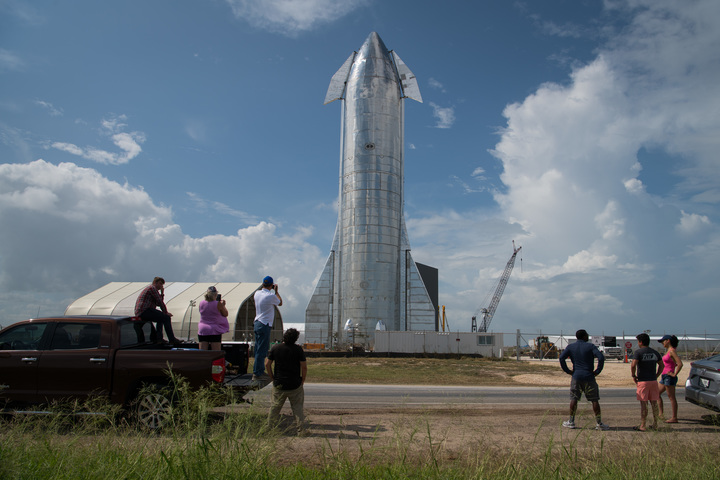SpaceX has unveiled the rocket it hopes will one day carry humans to Mars

The news: SpaceX CEO Elon Musk gave a presentation on the development of the company’s rocket Starship, which is intended to fly passengers to the moon and Mars, on Saturday night. His talk took place at SpaceX’s facility in Boca Chica, Texas, in front of a huge prototype of the rocket (pictured). The timing of the event was no coincidence: it was the 11th anniversary of the company’s sending the first private liquid-fueled rocket into orbit.
About Starship: It’s a beast. It’s over 165 feet (50 meters) tall, with three of SpaceX’s reusable Raptor engines attached to its base. It weighs about 1,400 tons when loaded with fuel. Combined with the company’s Super Heavy booster, it will be the largest and most powerful rocket ever made, producing about double the thrust of the Saturn V that carried Apollo astronauts to the moon back in 1969. SpaceX is assembling two identical Starship rockets, one in Texas and the other at its facility in Cape Canaveral, Florida, where it does most of its launches.
A bold promise: Elon Musk claims the rocket will be tested in “one to two months” and carry its first passengers at some point next year. The first test will see Starship fly up to 12 miles (19 kilometers) before returning to Earth, he said. His long-standing ambition is to take humans to Mars.
Shade: Not everyone seemed so delighted at the big reveal. NASA administrator Jim Bridenstine responded with an arch tweet taking aim at a lack of focus on NASA’s Commercial Crew program:
“I am looking forward to the SpaceX announcement tomorrow. In the meantime, Commercial Crew is years behind schedule. NASA expects to see the same level of enthusiasm focused on the investments of the American taxpayer. It’s time to deliver.”
SpaceX is one of the two main contractors on the program, alongside Boeing, and it is developing its Crew Dragon module for NASA astronauts to travel to the International Space Station and beyond.
Read next: Can SpaceX and Blue Origin best a decades-old Russian rocket engine design?
Want to stay up to date with space tech news? Sign up for our newsletter, The Airlock.
Deep Dive
Space
How to safely watch and photograph the total solar eclipse
The solar eclipse this Monday, April 8, will be visible to millions. Here’s how to make the most of your experience.
How scientists are using quantum squeezing to push the limits of their sensors
Fuzziness may rule the quantum realm, but it can be manipulated to our advantage.
The race to fix space-weather forecasting before next big solar storm hits
Solar activity can knock satellites off track, raising the risk of collisions. Scientists are hoping improved atmospheric models will help.
Stay connected
Get the latest updates from
MIT Technology Review
Discover special offers, top stories, upcoming events, and more.